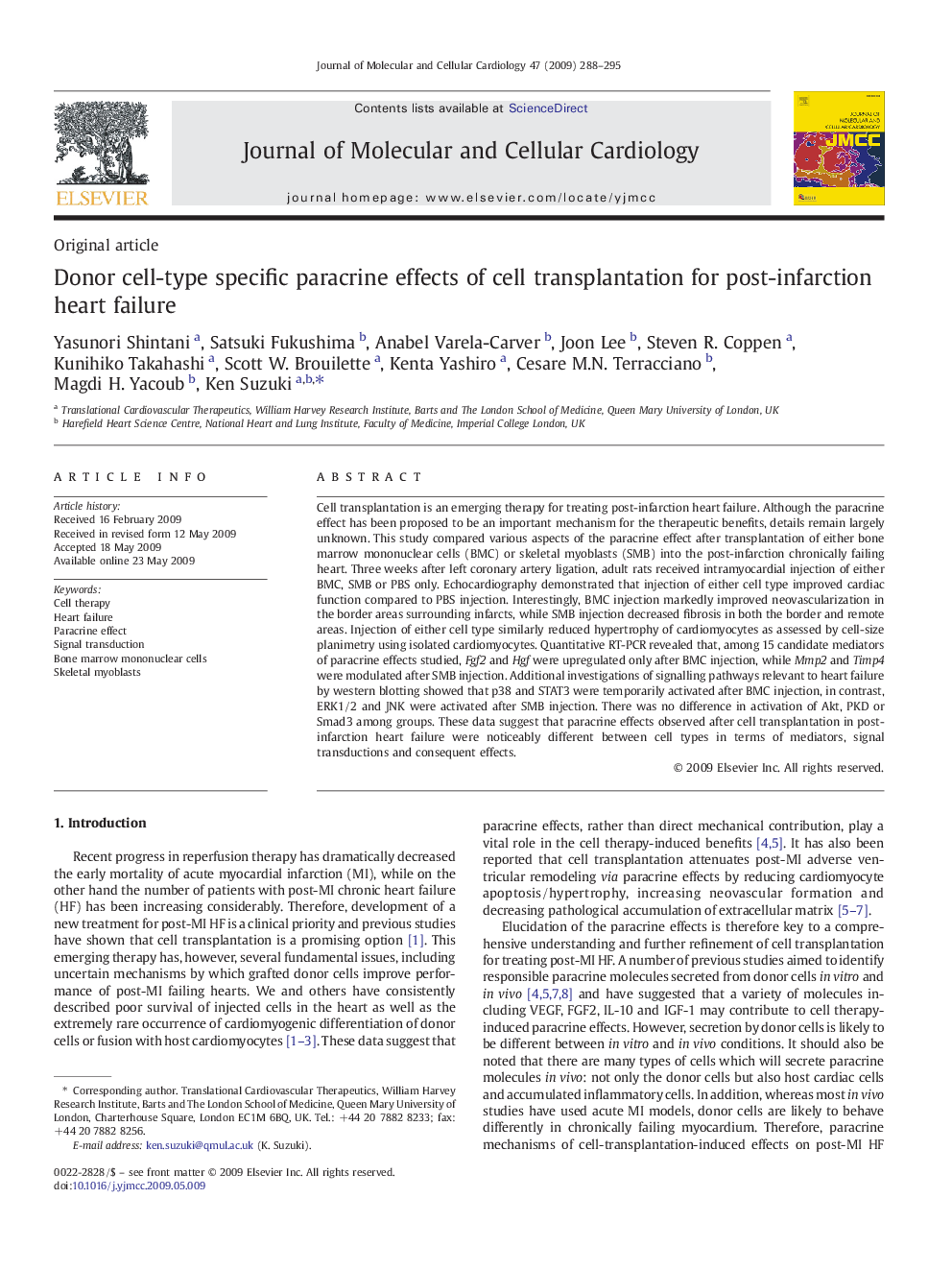| Article ID | Journal | Published Year | Pages | File Type |
|---|---|---|---|---|
| 2190993 | Journal of Molecular and Cellular Cardiology | 2009 | 8 Pages |
Cell transplantation is an emerging therapy for treating post-infarction heart failure. Although the paracrine effect has been proposed to be an important mechanism for the therapeutic benefits, details remain largely unknown. This study compared various aspects of the paracrine effect after transplantation of either bone marrow mononuclear cells (BMC) or skeletal myoblasts (SMB) into the post-infarction chronically failing heart. Three weeks after left coronary artery ligation, adult rats received intramyocardial injection of either BMC, SMB or PBS only. Echocardiography demonstrated that injection of either cell type improved cardiac function compared to PBS injection. Interestingly, BMC injection markedly improved neovascularization in the border areas surrounding infarcts, while SMB injection decreased fibrosis in both the border and remote areas. Injection of either cell type similarly reduced hypertrophy of cardiomyocytes as assessed by cell-size planimetry using isolated cardiomyocytes. Quantitative RT-PCR revealed that, among 15 candidate mediators of paracrine effects studied, Fgf2 and Hgf were upregulated only after BMC injection, while Mmp2 and Timp4 were modulated after SMB injection. Additional investigations of signalling pathways relevant to heart failure by western blotting showed that p38 and STAT3 were temporarily activated after BMC injection, in contrast, ERK1/2 and JNK were activated after SMB injection. There was no difference in activation of Akt, PKD or Smad3 among groups. These data suggest that paracrine effects observed after cell transplantation in post-infarction heart failure were noticeably different between cell types in terms of mediators, signal transductions and consequent effects.
